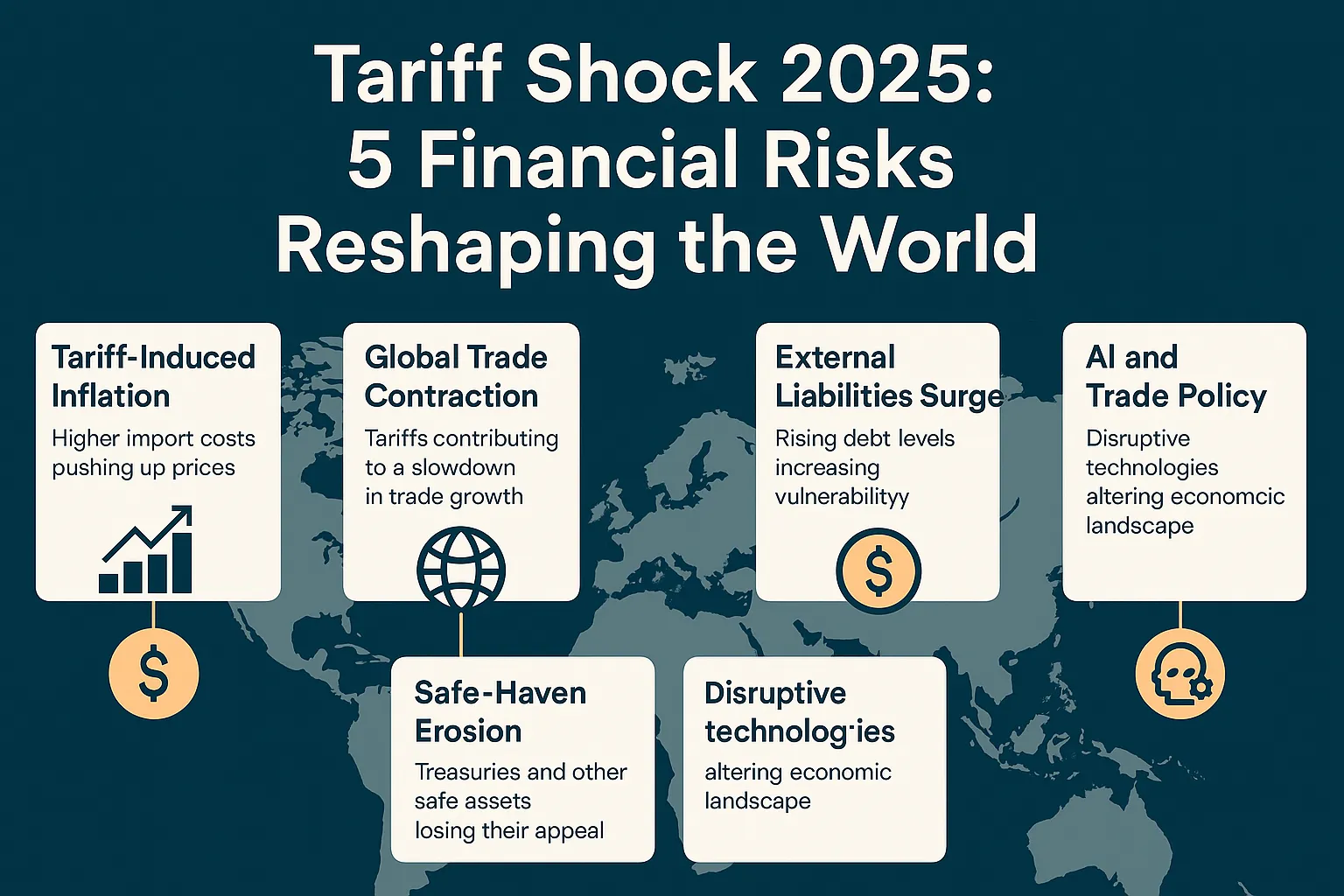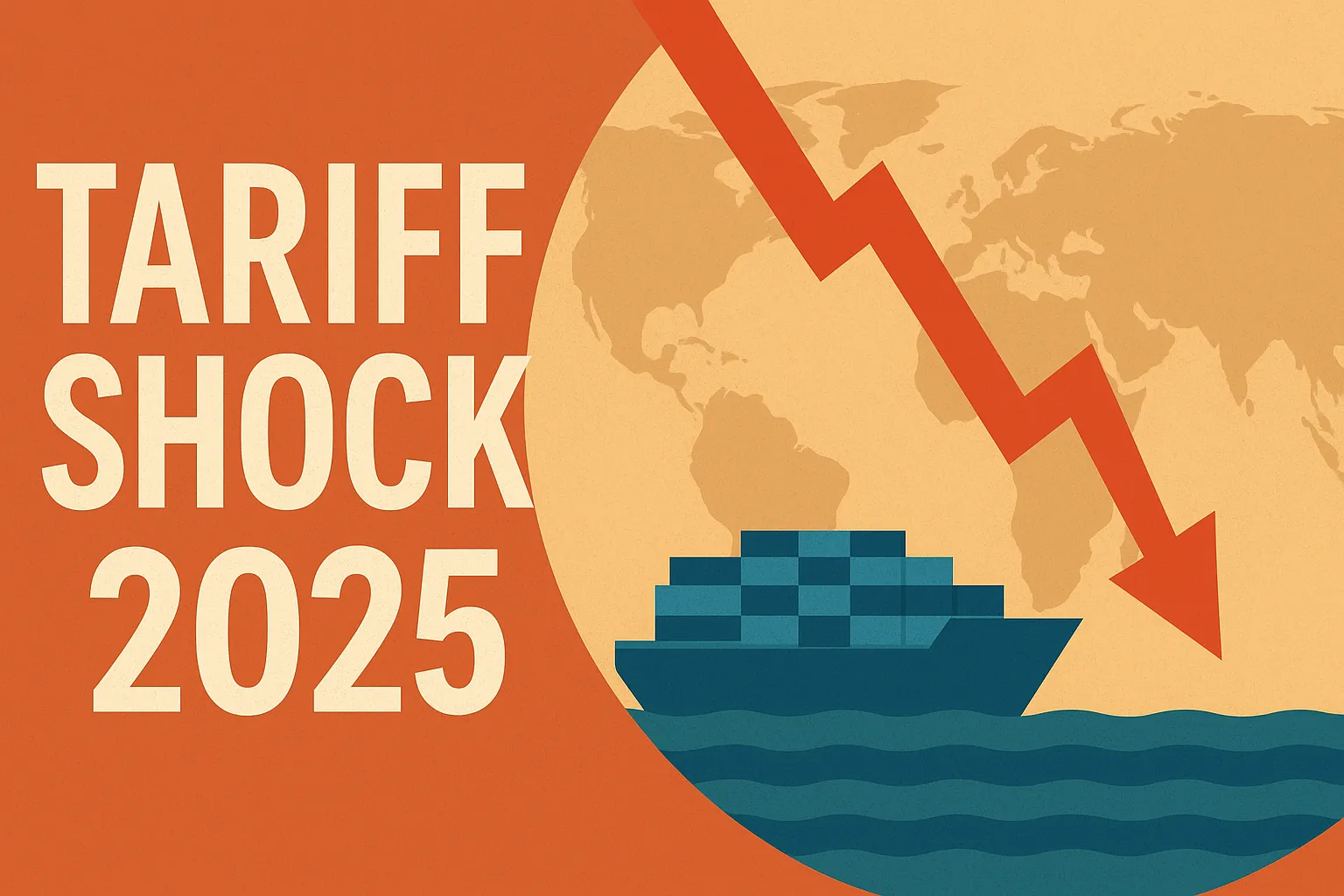Tariff Shock 2025- The U.S. has launched a bold economic maneuver: a 10% baseline reciprocal tariff, with country-specific rates reaching up to 50%, targeting over 80 trading partners. This sweeping policy, effective August 1, 2025, is already reshaping global finance, trade, and investment strategies.

The world economy is bracing for Tariff Shock 2025, a potential turning point that could reshape global trade, manufacturing, and consumer spending. As international tensions rise and trade wars simmer beneath diplomatic surfaces, 2025 might mark the year when tariff policy changes hit hardest.
Whether you’re a business owner, investor, or everyday consumer, understanding the implications of Tariff Shock 2025 is crucial to making informed decisions.
What is Tariff Shock 2025?
Tariff Shock 2025 refers to the anticipated global economic impact caused by a new wave of aggressive tariff implementations by leading economies—primarily the United States, China, and the European Union. These policies are expected to disrupt global supply chains, spike manufacturing costs, and increase the price of essential goods.
1. U.S.-China Trade Tensions Are Reigniting
The trade war between the United States and China never truly ended—it merely paused. In 2025, both countries are preparing to implement retaliatory tariffs on tech products, semiconductors, and agricultural goods.
Key Insight: Over 40% of U.S. electronics are assembled with Chinese components. Tariffs on these could lead to a 20–30% retail price hike by Q3 2025.
2. Global Supply Chains Face Major Disruption
Tariff Shock 2025 is expected to dismantle the delicate balance of global supply chains. From automotive parts to pharmaceuticals, goods that once flowed freely between nations will now face increased costs, customs delays, and potential sourcing issues.
Industries Most Affected: Tariff Shock 2025
- Automotive
- Pharmaceuticals
- Consumer Electronics
- Apparel & Textiles
Pro Tip: Start diversifying your suppliers now. Countries like Vietnam, India, and Mexico may emerge as cost-effective alternatives.
3. Inflation Will Spike—Again
Governments have tried to tame inflation since 2021, but Tariff Shock 2025 might reignite the fire. Tariffs are essentially taxes on imports, and businesses often pass these costs directly to consumers.
Forecast: Experts predict an additional 1.5% increase in global inflation due to tariff-driven price hikes, with emerging markets being hit the hardest.
4. Small Businesses Could Struggle to Survive
Unlike large corporations, small businesses lack the leverage to negotiate better rates or shift supply chains quickly. Rising input costs, delays in customs, and reduced demand from price-sensitive customers may lead to widespread closures or bankruptcies.
Advice for SMEs:
- Lock in current supplier contracts.
- Explore domestic sourcing options.
- Use digital marketplaces to find competitive global suppliers.
5. E-Commerce Will Become More Expensive
The convenience of ordering cheap gadgets, clothes, or décor from overseas could vanish. Tariff Shock 2025 will likely include harsher border controls and higher duties on e-commerce shipments.
Reality Check: A product that once cost $20 could now retail for $30–$35 after taxes and shipping. Expect delays, higher fees, and stricter regulations.
6. Consumers Must Prepare for a Price Surge
Tariff Shock 2025 won’t just be a business problem—it will hit consumers directly. Essentials like electronics, household items, vehicles, and even groceries might become significantly more expensive.
Ways to Prepare:
- Buy durable goods early (especially electronics and vehicles).
- Support local manufacturers to reduce import reliance.
- Watch government trade policy updates for potential tariff exemptions.
7. The Investment Landscape Will Shift
Markets thrive on stability. With tariffs creating volatility, 2025 could see a major shift in where and how people invest.
Smart Investment Ideas: Tariff Shock 2025
- U.S.-based manufacturers with diversified supply chains
- Logistics and warehousing firms
- Latin American producers as China alternatives
Final Thoughts on Tariff Shock 2025
Tariff Shock 2025 isn’t just a headline—it’s a looming reality that could ripple through every layer of the global economy. While it’s impossible to predict every twist and turn, preparation is not only wise—it’s essential.
From consumers to CEOs, everyone must adapt to a world where trade is no longer free and open, but costly and strategic.
FAQs on Tariff Shock 2025
Q: Will all countries be affected equally?
A: No. Developed countries may cushion the shock better than developing economies that rely heavily on imports.
Q: Are there any potential benefits?
A: Yes. Domestic industries may see a resurgence as import alternatives become cost-competitive.
Q: How long will the effects last?
A: Tariff policies often have long-term impacts. The shock in 2025 could influence trade for the next decade.
Disclaimer
This article relies on internal data, publicly available information, and other reliable sources. It may also include the authors’ personal views. However, it’s essential to note that the information is for general, educational, and awareness purposes only—it doesn’t disclose every material fact. This analysis is for informational purposes only and does not constitute financial advice. Consult a professional before making investment decisions.
We publish information on World Virtual CFO in good faith, solely for general information. World Virtual CFO doesn’t guarantee the completeness, reliability, or accuracy of this information. These are our views for informational purposes. When you use our website, know that any action you take is entirely at your own risk. World Virtual CFO won’t be liable for any losses or damages connected to your use of our website. For detailed information, refer to our disclaimer page.
Dr. Dinesh Sharma is an award-winning CFO and AI strategist with over two decades of experience in financial leadership, digital transformation, and business optimization. As the founder of multiple niche platforms—including WorldVirtualCFO.com—he empowers professionals and organizations with strategic insights, system structuring, and innovative tools for sustainable growth. His blogs and e-books blend precision with vision, making complex financial and technological concepts accessible and actionable.

2 thoughts on “Tariff Shock 2025: 7 Hard Truths You Must Know Now”